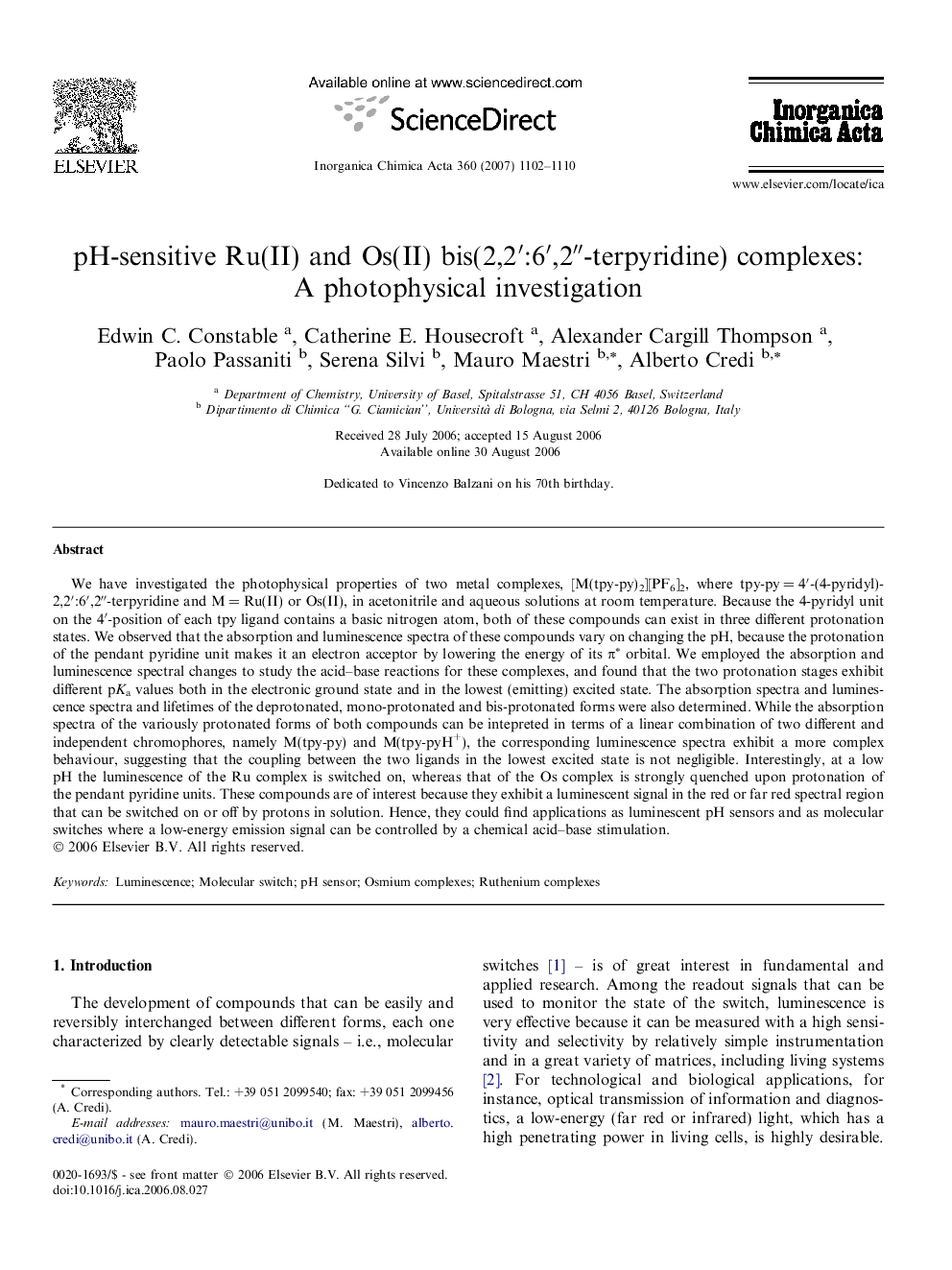| کد مقاله | کد نشریه | سال انتشار | مقاله انگلیسی | نسخه تمام متن |
|---|---|---|---|---|
| 1312790 | 975497 | 2007 | 9 صفحه PDF | دانلود رایگان |

We have investigated the photophysical properties of two metal complexes, [M(tpy-py)2][PF6]2, where tpy-py = 4′-(4-pyridyl)-2,2′:6′,2″-terpyridine and M = Ru(II) or Os(II), in acetonitrile and aqueous solutions at room temperature. Because the 4-pyridyl unit on the 4′-position of each tpy ligand contains a basic nitrogen atom, both of these compounds can exist in three different protonation states. We observed that the absorption and luminescence spectra of these compounds vary on changing the pH, because the protonation of the pendant pyridine unit makes it an electron acceptor by lowering the energy of its π∗ orbital. We employed the absorption and luminescence spectral changes to study the acid–base reactions for these complexes, and found that the two protonation stages exhibit different pKa values both in the electronic ground state and in the lowest (emitting) excited state. The absorption spectra and luminescence spectra and lifetimes of the deprotonated, mono-protonated and bis-protonated forms were also determined. While the absorption spectra of the variously protonated forms of both compounds can be intepreted in terms of a linear combination of two different and independent chromophores, namely M(tpy-py) and M(tpy-pyH+), the corresponding luminescence spectra exhibit a more complex behaviour, suggesting that the coupling between the two ligands in the lowest excited state is not negligible. Interestingly, at a low pH the luminescence of the Ru complex is switched on, whereas that of the Os complex is strongly quenched upon protonation of the pendant pyridine units. These compounds are of interest because they exhibit a luminescent signal in the red or far red spectral region that can be switched on or off by protons in solution. Hence, they could find applications as luminescent pH sensors and as molecular switches where a low-energy emission signal can be controlled by a chemical acid–base stimulation.
The two complexes shown in the illustration exhibit peculiar absorption and luminescence changes upon addition of protons in acetonitrile or aqueous solutions. These compounds are candidates for the development of luminescent pH sensors and photochemical molecular switches because they exhibit a low-energy emission signal that can be controlled by chemical acid–base stimulation.Figure optionsDownload as PowerPoint slide
Journal: Inorganica Chimica Acta - Volume 360, Issue 3, 15 February 2007, Pages 1102–1110